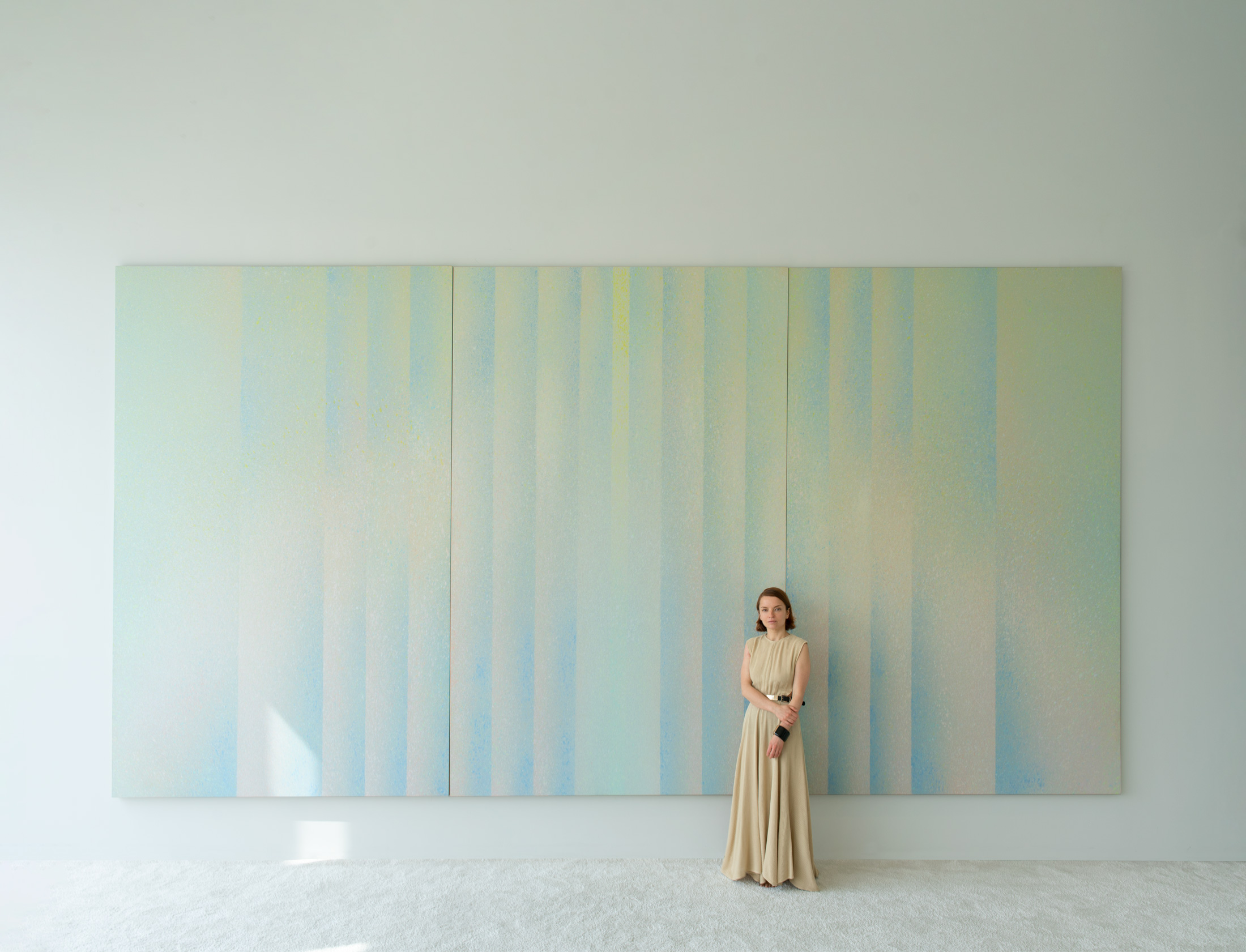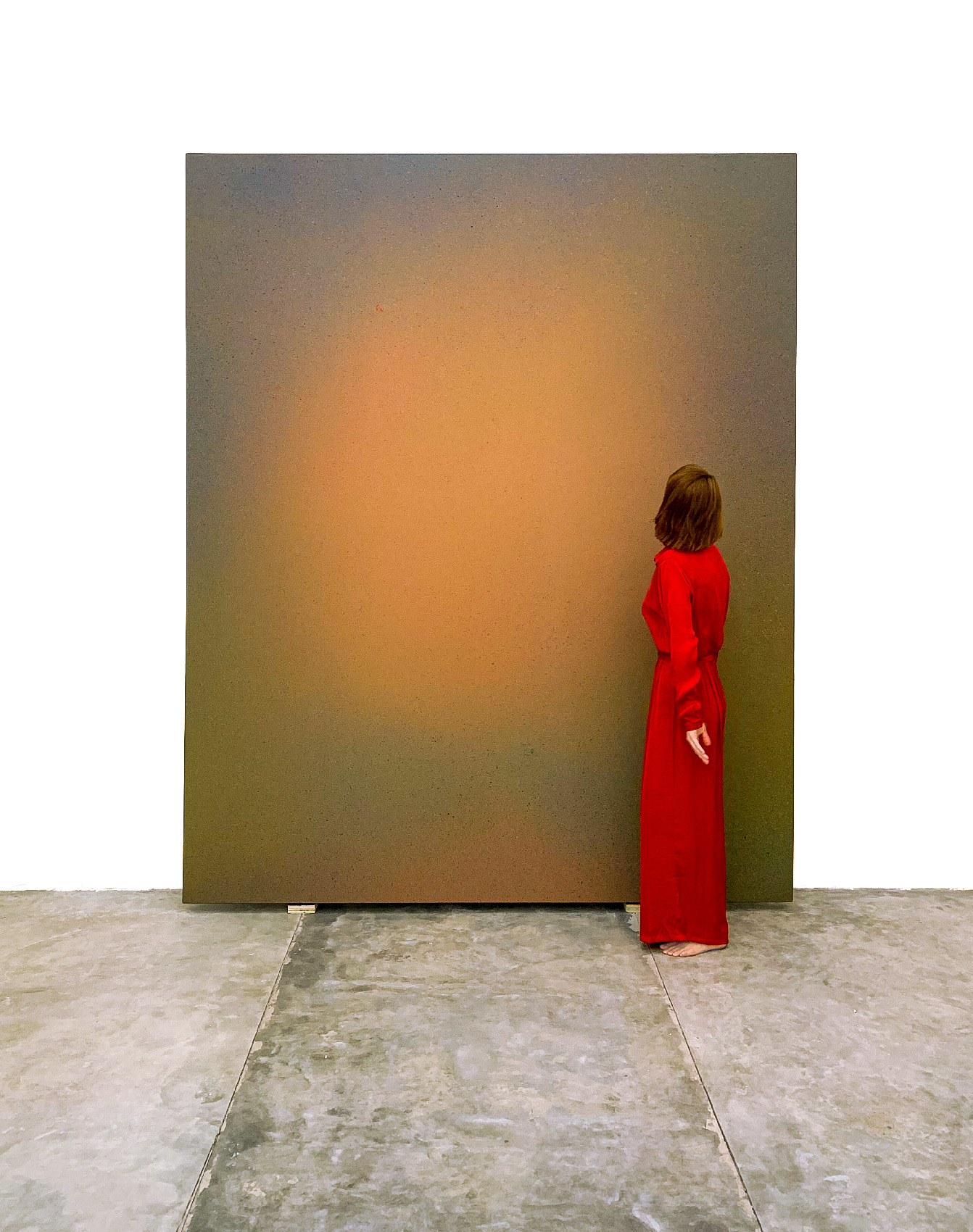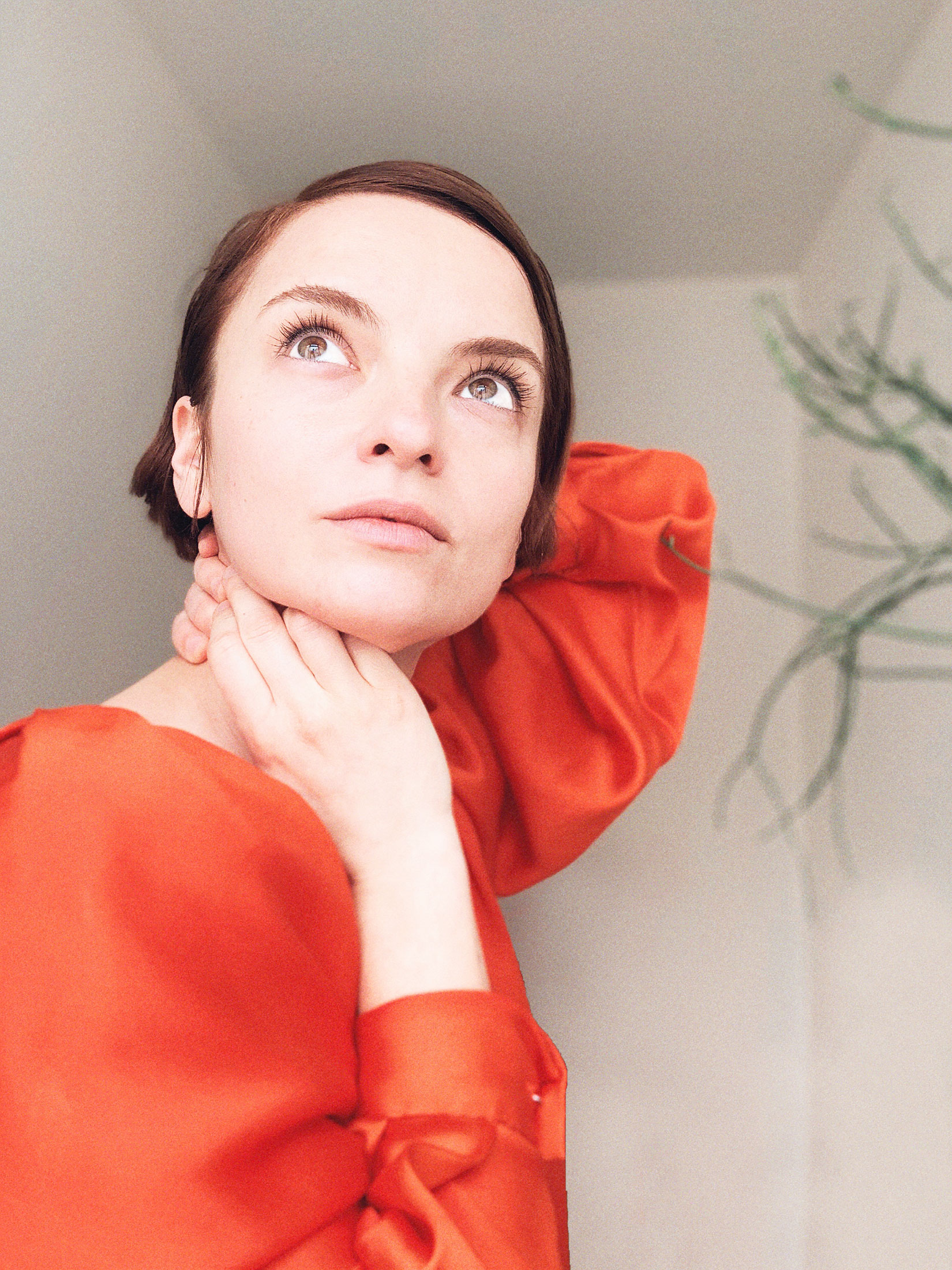
Taking in her paintings is like opening your eyes after a nap in the sand. The colourful masses on her canvas appear to be in motion, plunging the spectator into a semi-conscious state. Beyond the merely pictorial, Ana Montiel's works read like spiritual, dreamlike invitations, that hit you with a feeling of satisfaction and involuntary entrancement. Any tangible form looks acid-washed; a silhouette or a ray of sun gives way to a sfumato of light and pigments.
The artist is interested in the conceptual issues of perception and phenomenology, based on the premise that reality is nothing but a collective and controlled hallucination. Intrigued by neuroscience and quantum physics, she considers herself a "mapper of the unconscious", producing the Fields series -a multicoloured adventure meant as a tribute to the intangible.
In the course of practicing hybrid art, drifting from drawing to design to artistic direction, Ana Montiel shunned painting during her school years before finally embracing it. Originally from Spain, the artist worked in Barcelona and then in London, before settling down in Mexico. Her colour palette stimulates both visually and acoustically, like a kind of chorus, giving each spectator their own unique symphony.
Ana Montiel's art vibrates, resonates, and performs a kind of synaesthesia, marrying noise and matter, pixel and sound. Indeed, before setting to work, the artist communes with her canvas thanks to a moment of musical and physical awakening. She gathers the colours and applies them carefully with her spray gun. The tints fuse, superimpose, then come to rest.
Detail by detail, each grain of colour is adjusted according to a meticulous method of application of acrylics, with some paintings having up to forty sub-layers. The effect is magnetic, in much the same vein as the mystical installations of American artist James Turrell or the meditative velvets of the Italian Ettore Spaletti. With her pictorial works, Ana Montiel opens windows onto a world that topples us and shoves us towards new prophetic dimensions, dimensions of the infinite and unknown.
Clélia Dehon - Head of Public Program at Louis Vuitton Foundation.
Text extracted from The Steidz magazine, issue no. 5
The artist is interested in the conceptual issues of perception and phenomenology, based on the premise that reality is nothing but a collective and controlled hallucination. Intrigued by neuroscience and quantum physics, she considers herself a "mapper of the unconscious", producing the Fields series -a multicoloured adventure meant as a tribute to the intangible.
In the course of practicing hybrid art, drifting from drawing to design to artistic direction, Ana Montiel shunned painting during her school years before finally embracing it. Originally from Spain, the artist worked in Barcelona and then in London, before settling down in Mexico. Her colour palette stimulates both visually and acoustically, like a kind of chorus, giving each spectator their own unique symphony.
Ana Montiel's art vibrates, resonates, and performs a kind of synaesthesia, marrying noise and matter, pixel and sound. Indeed, before setting to work, the artist communes with her canvas thanks to a moment of musical and physical awakening. She gathers the colours and applies them carefully with her spray gun. The tints fuse, superimpose, then come to rest.
Detail by detail, each grain of colour is adjusted according to a meticulous method of application of acrylics, with some paintings having up to forty sub-layers. The effect is magnetic, in much the same vein as the mystical installations of American artist James Turrell or the meditative velvets of the Italian Ettore Spaletti. With her pictorial works, Ana Montiel opens windows onto a world that topples us and shoves us towards new prophetic dimensions, dimensions of the infinite and unknown.
Clélia Dehon - Head of Public Program at Louis Vuitton Foundation.
Text extracted from The Steidz magazine, issue no. 5

Questions about the nature of perception — the what, why, and how of consciousness — have been driving the work of Mexico-based artist Ana Montiel lately. And while any definitive answers to such age-old puzzles remain elusive, Montiel’s work provides a kind of aesthetic response, making those mysteries both visual and material. There’s a mesmeric, meditative quality to her canvas and digitally-created color field paintings, reminiscent of the Light & Space art of the ’60s and ’70s. Something quietly active occurs while viewing them, though the works themselves are static; engaging with her pieces and the ideas behind them can encourage a kind of headiness, but her work is also just a pleasure to look at.
In the last few years, Montiel has shown internationally at galleries, as she’s moved around the world herself. Montiel was born and raised in Logroño, Spain. Pursuing her BFA brought her to the University of Barcelona, and she stayed in that city for over a decade before moving to London. After five years there, a visit to Mexico City convinced her that’s where she wanted to be. “When I got back to London, I gave away around 95 percent of my stuff and moved, with just two suitcases and my elderly cat.” It’s been a productive, generative shift for Montiel. For over three years now, she’s made her home in Tepoztlan, a village about an hour outside of Mexico City. “The rural pace tames my hyperactive mind and lets me concentrate on my practice.”
The intensity and commitment she brings to her artistic process — from reading in-depth about quantum physics and neuroscience to experimenting with altered states — is visible in what she creates but it’s also balanced by a lightness and ethereality.
Deborah Saphiro / SIGHT UNSEEN
*Continue reading HERE

Ana Montiel crosses the frontiers of the preconscious and the unconscious that, in the words of Georges A. Miller, are those “archives where all the processes that psychologists suppose that must exist to explain what people do" are stored, in search of her particular images in the same way that, over time, shamans and many other artists have done it.
Lewis-Williams argues that "the art from the depths of the upper Paleolithic caves contradicts the seemingly obvious fact that art is made to be contemplated." It seems an irrational gesture, but we may only have expelled from our cognition those altered states of consciousness that induce us to interior experiences as authentic as those that keep us awake in appearance during the waking state. Ana Montiel brings into play those states in her risky visual immersion into the unknown and ulterior of herself, in the same process that the first settlers followed with the result of the cave paintings.
Physically, Lewis-William illustrates, "underground passages and chambers were the entrails of the underworld; the entrance into them was the entry, both physical and psychic, into the lower world." Being more precise: “the entrance to a cave was the entrance to the world of spirits. The embellishing images illuminated (possibly in a quite literal sense) a path to the unknown." This place was accessed after a ritual where certain altered states of consciousness were reached through which the earthly world and the spirits related. The wall of the cave was the last frontier, the painting was the "offering" and there man tuned in perfect synchronicity with the hereafter. In ‘Fields’ Ana Montiel has had present the complex exchange of energy between the rational and the irrational, the paintings themselves are witnesses of that communication.
Julio Hontana
Lewis-Williams argues that "the art from the depths of the upper Paleolithic caves contradicts the seemingly obvious fact that art is made to be contemplated." It seems an irrational gesture, but we may only have expelled from our cognition those altered states of consciousness that induce us to interior experiences as authentic as those that keep us awake in appearance during the waking state. Ana Montiel brings into play those states in her risky visual immersion into the unknown and ulterior of herself, in the same process that the first settlers followed with the result of the cave paintings.
Physically, Lewis-William illustrates, "underground passages and chambers were the entrails of the underworld; the entrance into them was the entry, both physical and psychic, into the lower world." Being more precise: “the entrance to a cave was the entrance to the world of spirits. The embellishing images illuminated (possibly in a quite literal sense) a path to the unknown." This place was accessed after a ritual where certain altered states of consciousness were reached through which the earthly world and the spirits related. The wall of the cave was the last frontier, the painting was the "offering" and there man tuned in perfect synchronicity with the hereafter. In ‘Fields’ Ana Montiel has had present the complex exchange of energy between the rational and the irrational, the paintings themselves are witnesses of that communication.
Julio Hontana
 ´
´
Ana Montiel's relationship with color oscillates between absolute erudition and primitivism, between the complex and the simple. She does not perceive color as a solid surface, she associates without any prejudices all the different tones and gradients to sensations or moments, to emotions, or to objects without a name. Layers of hues run through her canvases like white noise, emerging from the depths to disappear again, generating different narratives for each viewer. One can spend hours standing in front of one of her Fields, waiting for the cloud of color that created all that frenzy a few minutes ago to happen again, in the same way you wait at a large aquarium for the mother walrus and her babies to swim again in front of you while they greet you.
Enrique Giner de los Rios